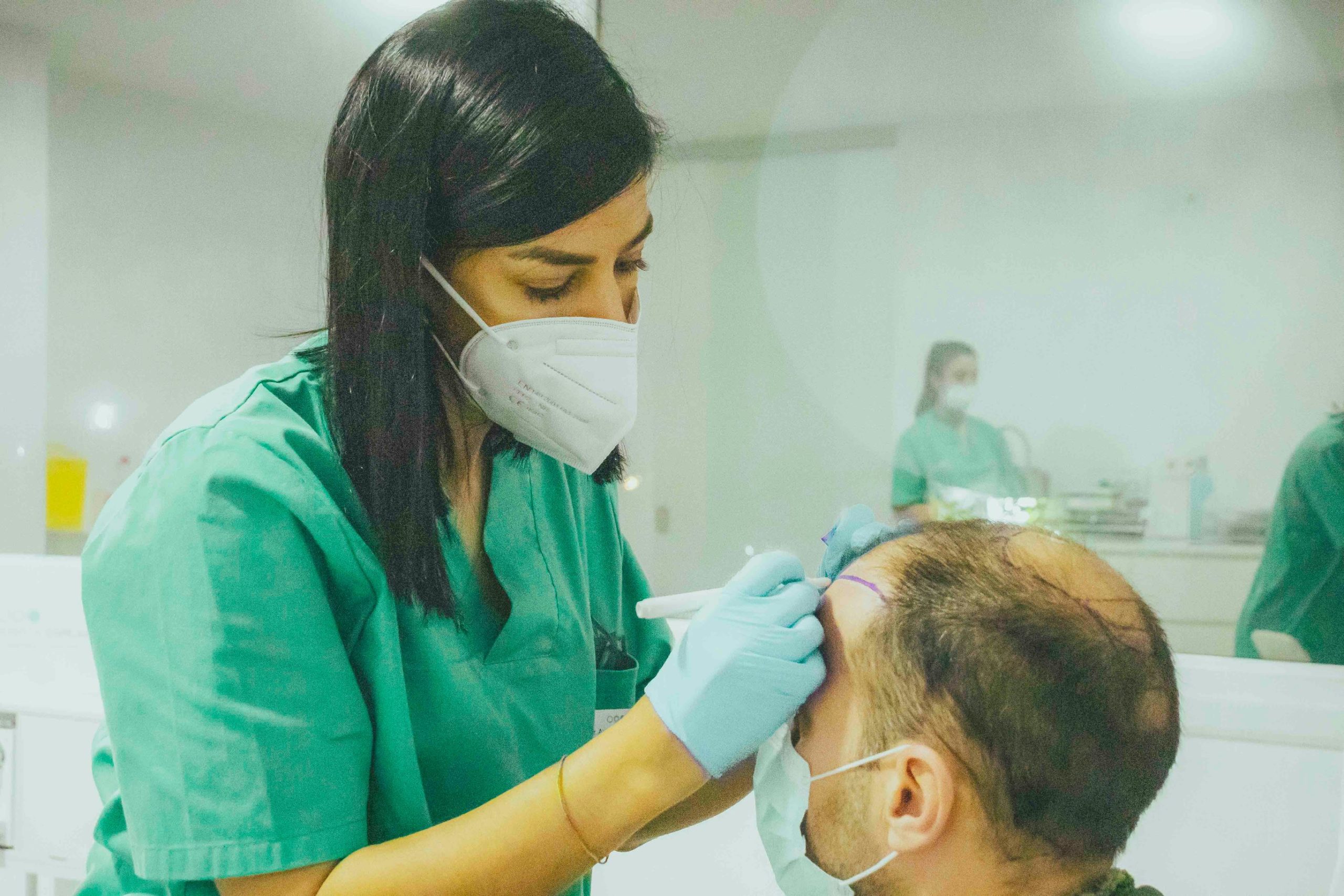
20th October 2021
Hair loss is a problem that affects both men and women. Depending on how that hair loss is, there are different types of alopecia in women, as well as in men. In this article we tell you what is MAGA alopecia, who does it affect and what are its main symptoms.
MAGA alopecia refers to the male androgenic alopecia, therefore this can only be given in men. In fact, it is the most common form of alopecia among men and, mainly, it occurs due to genetic factors.
Our doctors indicate that hair loss due to MAGA alopecia begins with a miniaturization of the hair, that is, the hair becomes increasingly finer until it ends up falling out and no longer grows back. This occurs due to a male hormone called dihydrotestosterone or DHT.
Dihydrotestosterone is generated when the enzyme 5 alpha-reductase comes into play converting testosterone to DHT leading to male androgenic alopecia.
MAGA alopecia is progressive, so that the hair does not fall out suddenly, but the man goes through different stages of this type of alopecia.
To measure the degree of androgenic alopecia that a person suffers from, what is known as Hamilton-Norwood scale. It is a classification of alopecia with which it is determined how advanced it is. Knowing this exactly is essential when performing a hair graft, since in this way the feasibility of the intervention is defined as well as the number of follicular units that can be implanted. In Hospital Capilar We offer a service completely adapted to the patient's expectations, taking into account their previous hair diagnosis.
Broadly speaking, MAGA alopecia goes through several phases as hair loss progresses.
When a man develops MAGA alopecia, it begins with a loss of density that is almost imperceptible to the eye, usually in the frontal area of the scalp.
This phase corresponds to grade I on the Hamilton-Norwood scale.
If MAGA alopecia is not treated, it continues to progress. What we will begin to notice the most is the lack of hair in the recesses and crown.
When the capillary loss is already noticeable in the entrances and crown, we would be facing a grade II or III of the Hamilton-Norwood scale.
After going through all the degrees of the aforementioned scale, total baldness or generalized alopecia is reached. In these cases, the hair that remains is residual and a hair graft is completely unfeasible in these cases. For this reason, it is really important to see a doctor who specializes in the hair sector in the event of an intense hair loss so that it can be treated.
As we have commented, MAGA alopecia progresses if treatments are not used to stop it. In Hospital Capilar we take care of your hair health, and for this we have a medical equipment highly qualified and experienced in the hair sector who will assess your case in a personalized way to determine which is the best treatment in each case.
The CRT or Capillary Regeneration Treatment It is defined as a maintenance treatment with which the hair is in the best condition.
It consists of the extraction of a small amount of blood that, later, is subjected to a centrifugation process to obtain the rich growth factors. When obtained, they are injected directly into the patient's scalp using virtually painless microinjections.
Another treatment to treat MAGA alopecia is HRT or Hair Redensification Treatment. This consists of the application of drugs adapted to the patient with which it is possible to slow down hair loss and miniaturization.
Non-surgical treatments are aimed at keeping hair in the best possible condition. Nevertheless, hair lost due to MAGA alopecia does not grow back. The only way to see ourselves with hair again is to resort to hair grafting.
The hair implant is an outpatient intervention in which the follicular units are extracted from the donor area to implant them in the area affected by baldness. The definitive results are given one year after surgery, eighteen months in the case of the crown, although the first results can be seen six months after the intervention.

En Hospital Capilar we are experts in hair medicine and we want to solve all your doubts about hair grafting. One of the keys that guarantee the success of the results is a good capillary diagnosis that determines how many follicular units can be extracted, among others.
Sanitary Reg. No. Pontevedra: C-36-003121 Sanitary Reg. No. Madrid: C517593 Sanitary Reg. No. Murcia: 30800014


Copyright © 2021 - Legal Notice and Privacy Policy - Cookies policy